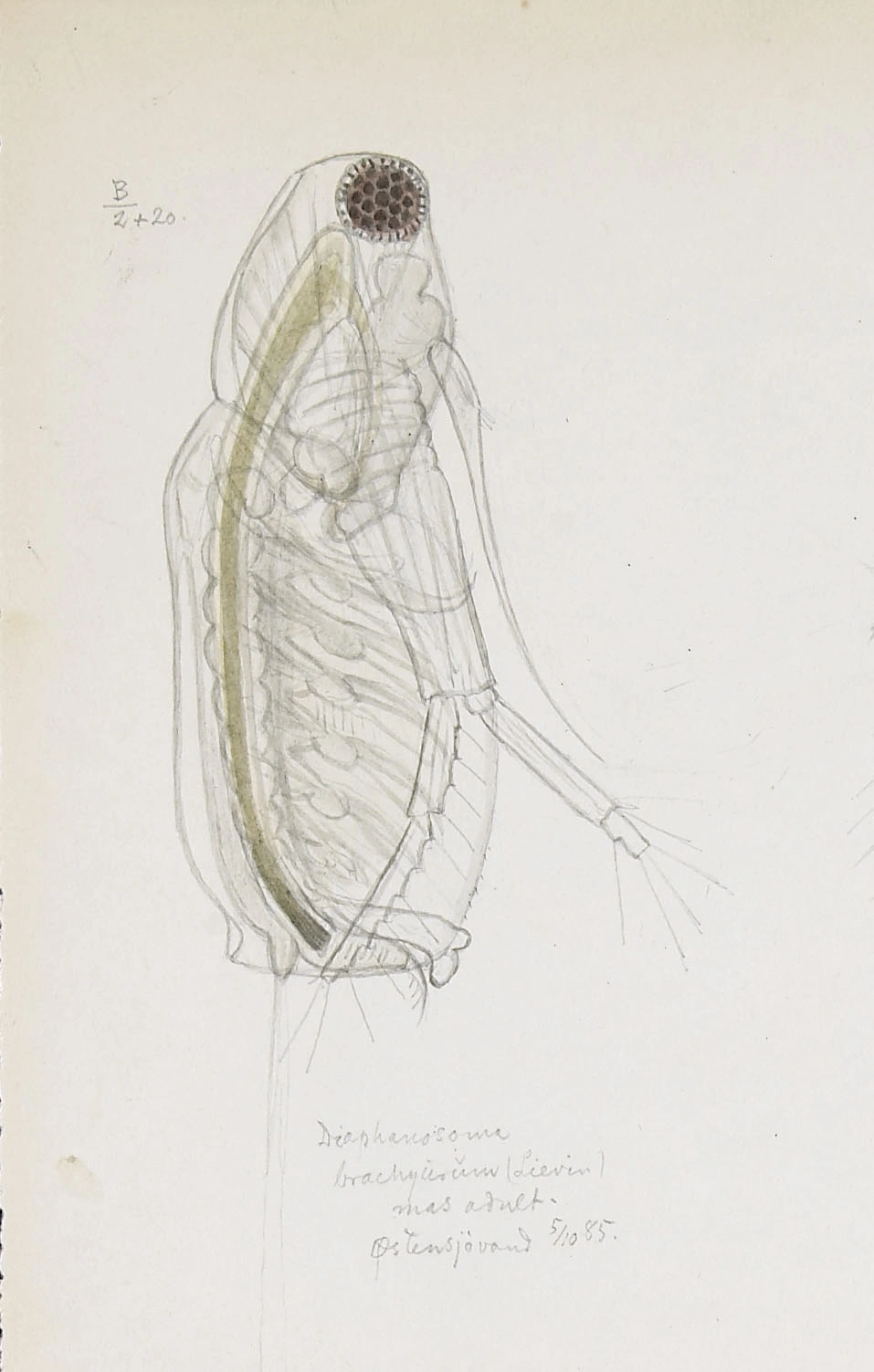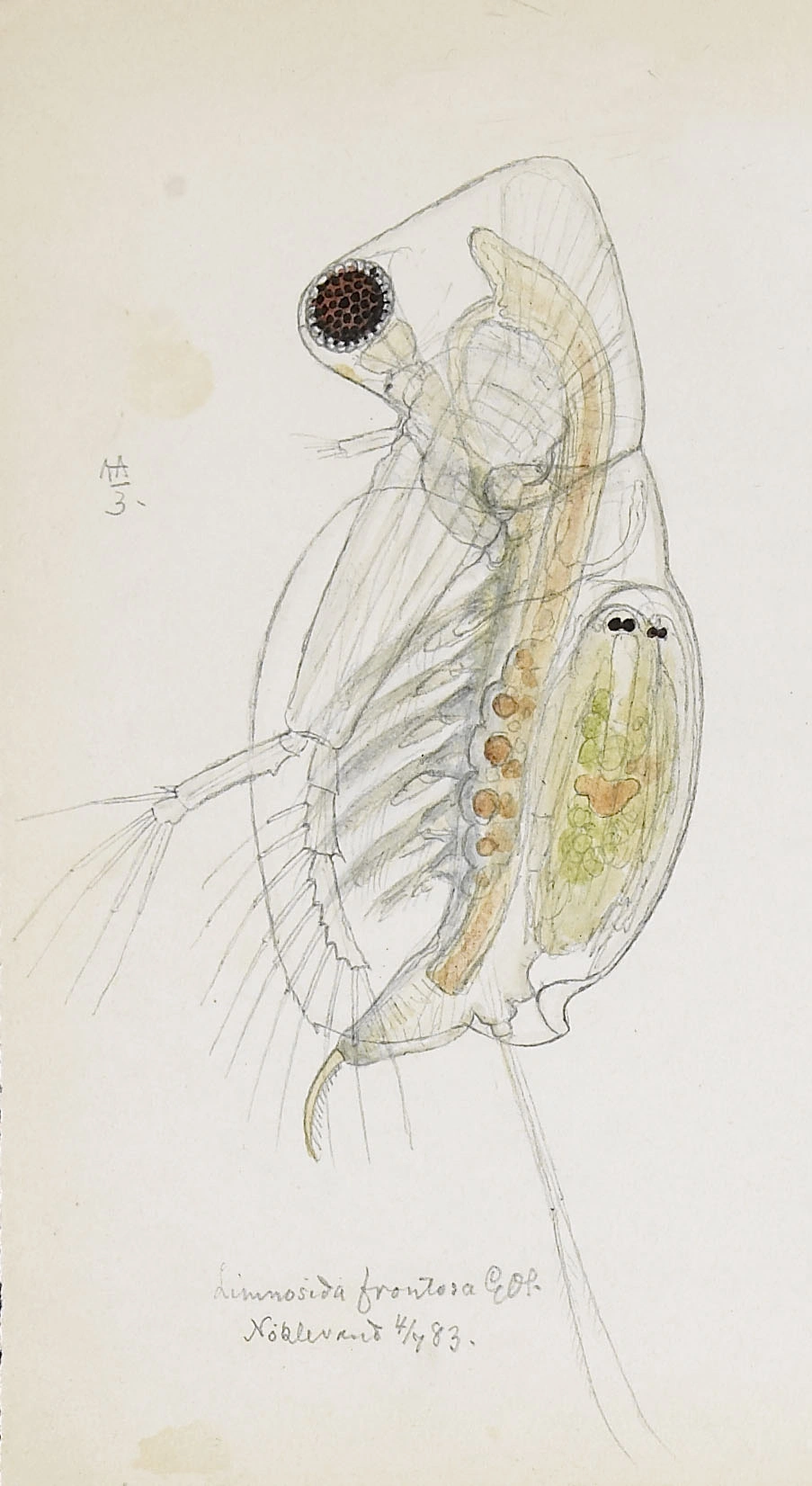Latona setifera
Latona setifera (female)
The basal segment of the two jointed second antennae in Latona setifera is powerfully build. The branches are equipped with a great number of long bristles and the animal moves in long jumps faster than any other cladocerans.
Key characteristics
Latona setifera (male)
Seen from the side, Latona setifera has an oval form being about twice as long as broad. The first pair of antennae differ from other in the Sididae family, in having long bristles. The basal segment of the two jointed second antennae is powerfully build and gives the appearance of being a third branch. The branches are equipped with a great number of long bristles and the animal moves in long jumps faster than any other cladocerans. Its postabdomen is relatively small, and has two coarse teeth attached to the abdominal claw. Young individuals are almost hyaline, while adult specimens have blue, green or brown colours.
Female: Length 1.4–2.8 mm
Male: Length 1.4–1.8 mm
Ecology and distribution
L. setifera is a littoral species which has been found in 3.5 % of the investigated lakes. It has a scattered distribution, and is found as far north as Troms County. L. setifera has never been found in waters above 1000 m a.s.l. Below this altitude it occurs with about equal frequency. Except for a few, all records are from lakes with surface area >1ha. The species seems quite tolerant to pH (4.2–7.7) and to the contents of electrolytes (0.6–34 mS/m). It lives near the bottom where it often lies still for long periods, and through continuous movements of the branchial appendages, small particles are continuously brought inside the carapace and towards the mouth.
| Vitenskapelig navn | < 4,5 | 4,5 - 4,9 | 5,0 - 5,4 | 5,5 - 5,9 | 6,0 - 6,4 | 6,5 - 7,0 | 7,0 - 7,4 | > 7,5 |
|---|---|---|---|---|---|---|---|---|
| 2 | 5,6 | 7,9 | 3 | 4,6 | 1,9 | 1,8 | 1,6 |
| Vitenskapelig navn | < 1,0 | 1,0 - 1,4 | 1,5 - 1,9 | 2,0 - 2,9 | 3,0 - 3,9 | 4,0 - 4,9 | 5,0 - 6,9 | 7,0 - 9,9 | > 10,0 |
|---|---|---|---|---|---|---|---|---|---|
| 2,2 | 4,9 | 2 | 4 | 6 | 3,1 | 2,4 | 2,8 | 1,3 |
| Vitenskapelig navn | < 0,01 | 0,01 - 0,09 | 0,1 - 0,9 | 1,0 - 9,9 | 10,0 - 99 | 100 - 999 | > 1000 |
|---|---|---|---|---|---|---|---|
| 0 | 0,5 | 1,3 | 3,5 | 4,1 | 6,6 | 8,7 |
| Vitenskapelig navn | < 100 | 100-299 | 300-499 | 500-699 | 700-999 | >1000 |
|---|---|---|---|---|---|---|
| 3,2 | 5,3 | 2,7 | 4,1 | 2,2 | 0 |
Look-alikes
Diaphanosoma brachyurum and Limnosida frontosa



